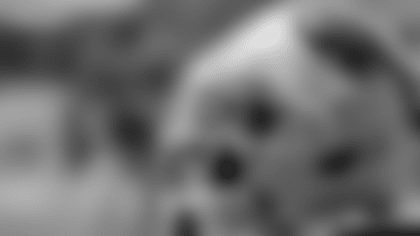It's no secret that the offense du jour in college football is the spread formation. Making use of elite athletes in space teams like Florida, Missouri and Oklahoma have experienced great success. More and more college programs are turning to the scheme, which in most cases is easier to execute for players.
But when it comes time to make the jump to the NFL some prospects struggle with the adjustment, and NFL coaches and scouts struggle just as much at times to make accurate evaluations. NFL talent evaluators aren't entrusted with judging a prospect's abilities at the college level. They have to project it to the NFL, and the spread offense doesn't do them any favors.
"Scouting college players today is difficult because of where the college game has gotten," said Bills offensive coordinator Turk Schonert. "You can see this guy is athletic, this guy is fast, this guy has good hands, but as far as technique goes, receivers running the route tree. Sometimes they're very limited in the routes that they run, so how do you know?"
Schonert used Detroit Lions receiver Calvin Johnson as a recent example.
"He ran about three routes in college," said Schonert. "So you wonder if he can run certain routes, so there's a lot of uncertainty when you take a guy. You take a guy for their speed and athleticism and you think they can do it and sometimes you're wrong. It's gotten harder and harder for scouts and pro coaches to judge college players."
But if you ask the players they insist that there's nothing to worry about.
"I'm pretty sure it's a question for teams," said Missouri receiver Jeremy Maclin of his route running skills. "But my theory is, I'm a receiver. I know how to run routes. I'm not going to stress out about it. Just because I didn't play in a pro-style offense doesn't mean I can't run a route. If that's what they think, that I can't run a route, then I'll run how they tell me to run it, so I'm not really worried about that aspect."
But running it in practice and running it against a coverage on Sunday are two very different things. One of the biggest adjustments for some rookie wideouts is recognizing coverages while in the course of their routes. It's a split-second decision and getting the hang of it requires reps and a lot of them. If a prospect has spent most of his time in a pro-style offense he's likely to adjust more effectively and contribute sooner.
"I talk to a lot of guys (in the league) and they all pretty much say the same thing," said Oklahoma receiver Juaquin Iglesias. "It's a different game and you have to be ready for it."
The same goes for tight ends. In the spread attack they're out wide or in the slot running routes and catching passes, but NFL scouts want to know if they can line up and block in the run game. Evaluating whether a spread formation tight end is capable by going off of his college tape is tough.
"A lot of these tight ends you look at in the draft, they don't even line up next to the tackle," said Schonert. "They're all spread out and like a wide receiver. That's one of the hardest positions to evaluate."
And the tight ends are well aware of the frustration that NFL scouts and coaches experience in trying to project whether a player can handle the adjustment.
"Being in a spread offense, not really attached with the tackle a lot in our offense I think people might have questions or doubts about blocking," said Florida tight end Cornelius Ingram. "I'm pretty sure they can see some of the film. To be honest we really didn't do it a whole lot, but I know I can and I've shown it in some games, but we really don't do it."
"I haven't done it that much, being in the spread offense at Missouri, but I think I'll
get the hang of it real soon, once I start practicing it more and more," said Chase Coffman. "Very rarely did we get in a three-point stance, but I'm definitely willing to learn."
Coffman realizes that not having that blocking experience leaves doubt in the minds of some NFL scouts.
"I wouldn't necessary say it hurts me, but it leaves the scouts definitely wondering about it," he said. "Until I show them or they see I'm willing to learn and do whatever it takes to get into that position and be the best I can, the spread definitely leaves some questions."
Scouts and coaches harbor similar doubts about quarterbacks because in the spread formation they're never under center. Playing in the shotgun is fine for the two-minute drill in the NFL, but under center is where most NFL signal callers spend their time.
"Taking snaps under the center, how you handle pressure, guys are around you, how do you read dropping back. You don't see that, so it makes it hard," said Schonert of evaluating spread quarterbacks. "That's why I like to see quarterbacks that play under center, USC quarterbacks are always under center and play the pro game. Matt Stafford at Georgia plays under center, so you get a better evaluation of those guys. The guys in the gun all the time you don't."
"That pro-style system really helps with the transition," said USC's Mark Sanchez. "While there might be different terminology, it's still the same language. For us, our protections and things like that I'm already starting to find out they cross right over. While they might have a different name, a lot of our route combinations and our progressions and our reads just have a different name. So for me that's great. going through a pro-style offense. I think that puts the most on the quarterback, the most responsibility at the line of scrimmage with protections and progressions."
For those quarterbacks that don't have a background in a pro-style system things can look a lot different once they hit the field with their NFL teammates in August.
"All of a sudden you get into camp and it's a different game and you see things different," said Schonert. "You're not all the way back there where your vision is really good and you've got to be able to see through the seams. Some have a hard time adjusting to it and some don't."
And determining beforehand which ones can adjust might be the hardest thing of all.





